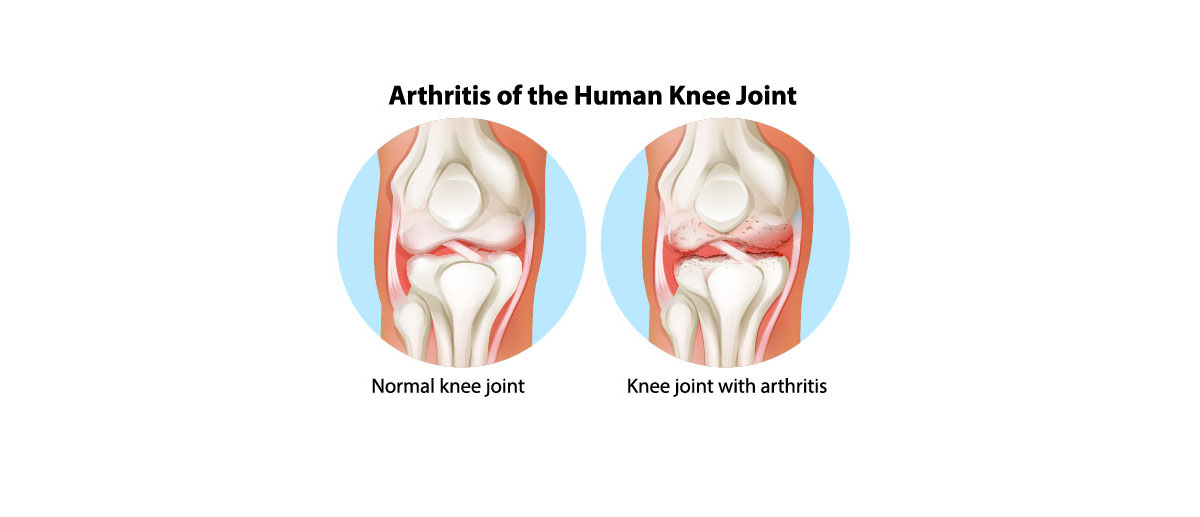What is Knee Osteoarthritis?
Knee osteoarthritis (OA) is the wear and tear type of arthritis that develops over the years. It tends to be accelerated in anyone who has had an ACL tear in the past or other significant trauma to the knee. OA first starts as softening of the bone cartilage cap and then it continues to erode down to bare bone. It can be very painful at times or silent. As pressure is put on the areas of arthritis, it becomes inflamed and causes pain and swelling in the knee. Patients commonly describe the pain as a dull ache or a sharp pain in the front/inner portion of the knee. Due to the inflammation people often feel their knee is stiff, especially in the colder weather. Another common finding with OA is feeling crepitus. Crepitus is the “creeks and cracks” that people feel in their knee when walking or climbing stairs. OA is progressive and will continue to worsen, however the rate at which OA worsens varies amongst individuals.

How Can I Prevent Knee Osteoarthritis?
Knee osteoarthritis is very difficult to prevent, but there are certain variables that can be change to help. The first modifiable risk factor is someone’s weight. For every pound that a person loses it decreases about five pounds of force through the knee. For example, losing 10 pounds will decrease about 50 pounds of pressure through the knee. This force reduction can make a tremendous difference. The force transmitted through the knee can also be decreased by choosing activities that are easier on the knees. Instead of running on the road consider a softer surface, biking, or swimming. If a person has a gym membership, then consider using the elliptical machine. Shoes also play a large role in foot strike pattern and how force is transmitted through the body. Always make sure your shoes are not worn out and fitted properly to your foot and walking pattern. Finally, some studies have shown that glucosamine and chondroitin supplements may help preserve cartilage. Not all the medical literature has demonstrated this to be true, but some people tend to find it helpful.
When Should I See My Doctor?
Knee OA is progressive and it’s important to have it under control, so you can enjoy your life. If the knee is swelling, then you should instinctively use ice. Ice will help control the inflammation and the subsequent pain that develops. Over the counter anti-inflammatories may also be help to again control pain and inflammation. If the pain persists despite these basic treatments, then you should see your doctor. Other types of treatments can be provided to help osteoarthritis. Injections can be used to reduce pain and inflammation or to restore cartilage and reverse arthritis. As arthritis becomes severe then options become limited and a joint replacement may be indicated. Don’t be a victim of knee osteoarthritis and its pain, please see a doctor to make sure your arthritis is under control.